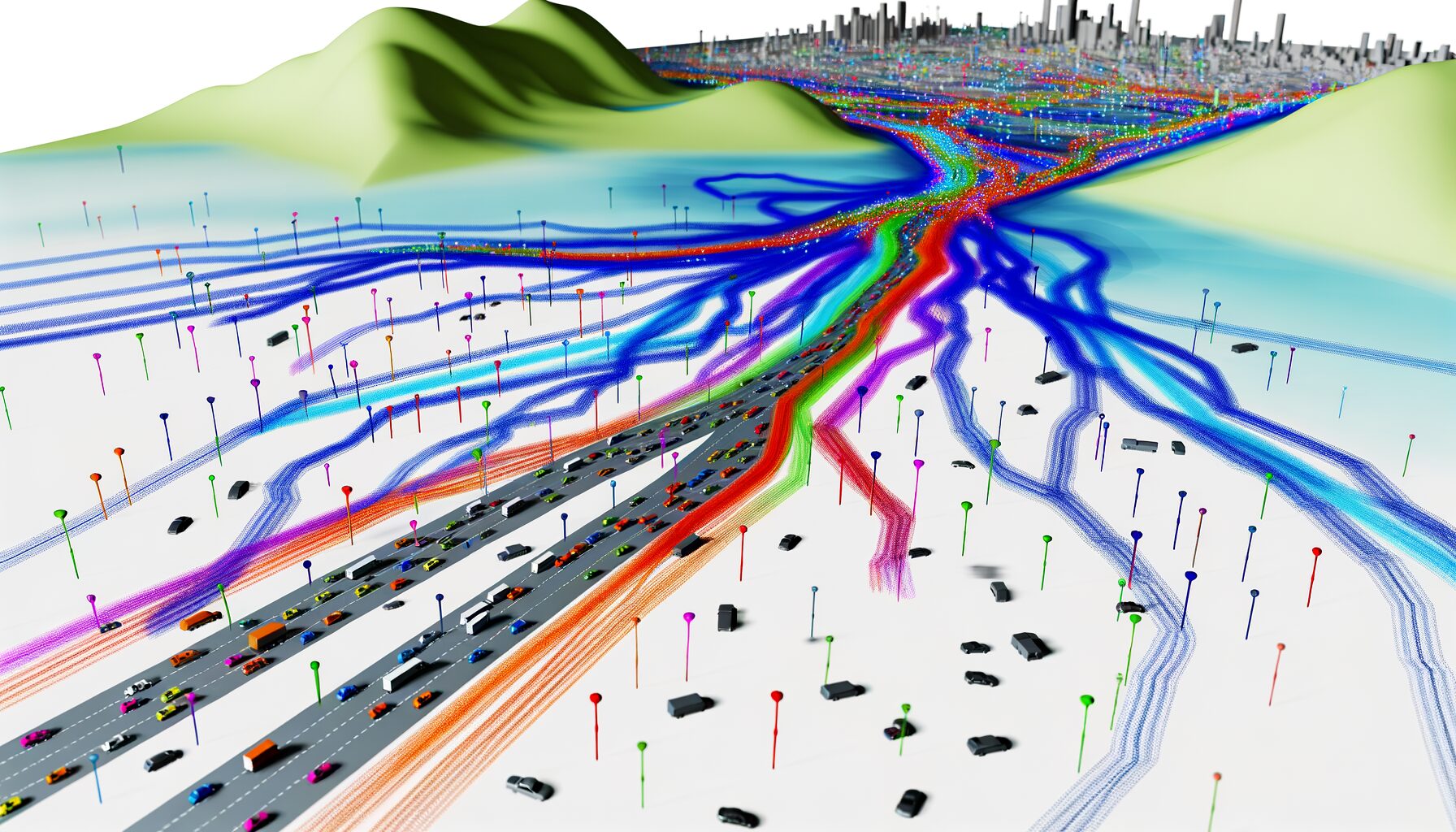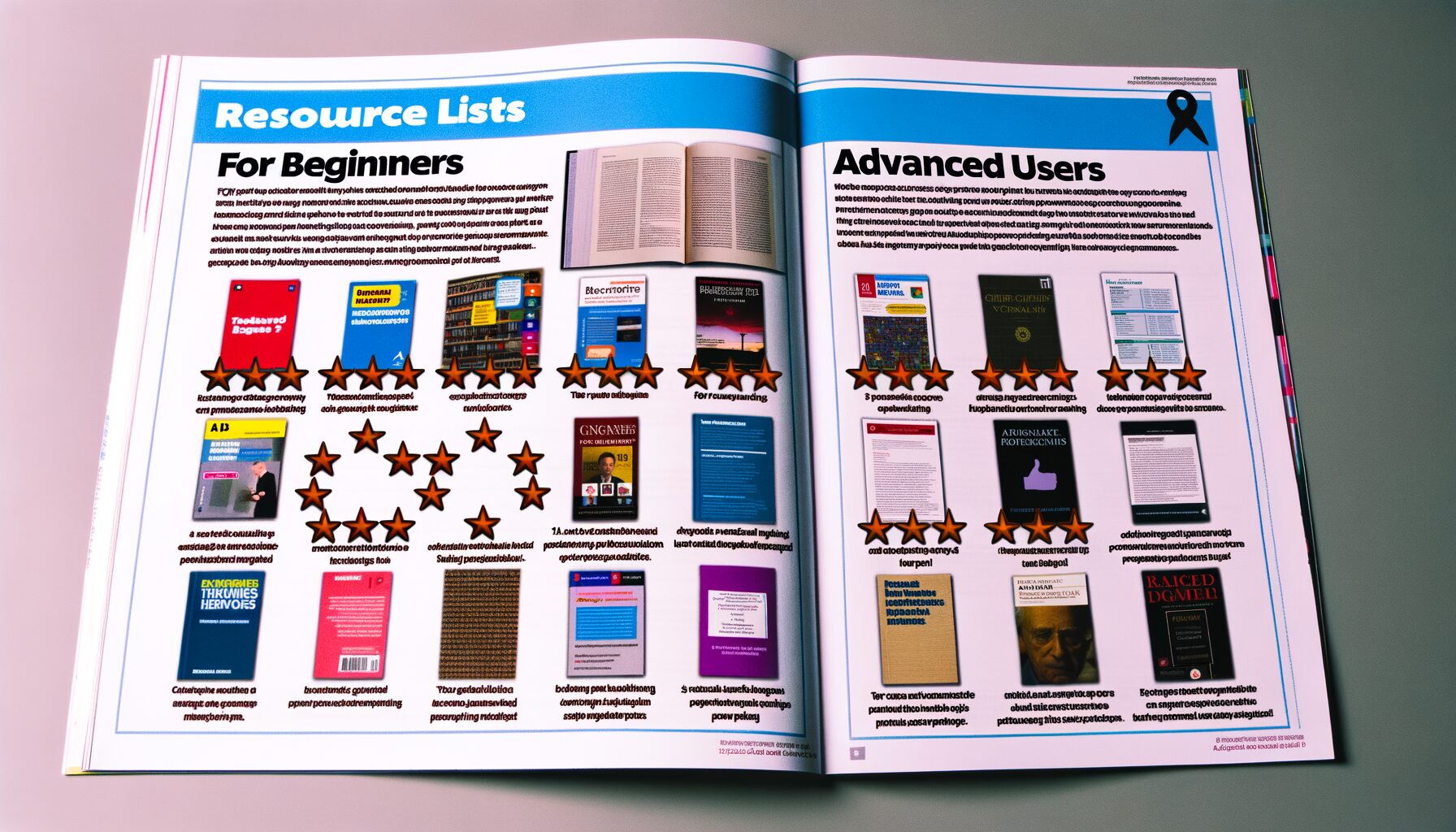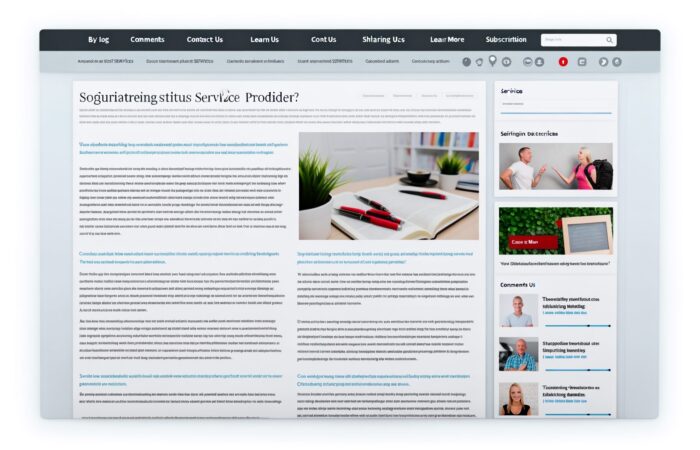Welcome to the World of On-Demand Traffic Sources!
Have you ever wondered about magic wands that could drive traffic to your website at the flick of a wand? Well, in the digital marketing world, On-Demand Traffic Sources are pretty close to such magical tools. Let’s dive in and understand this powerful concept, which can be game-changing for businesses and content creators alike!
Imagine this: you’ve put in months of hard work creating a killer product or writing phenomenal blog posts, but the hurdle remains – attracting eyeballs! Whether you’re a startup itching to get the word out there, or an established player seeking that extra edge, timely and targeted traffic can make all the difference. That’s where on-demand traffic zips into the picture.
What Exactly Is On-Demand Traffic?
In the simplest terms, On-Demand Traffic refers to traffic that you can influence directly and generate usually within a short notice. That means no more waiting for the slow grind of natural search engine results or hoping for a viral hit!
This form of traffic acquisition is focused on strategic, immediate gains rather than long-term organic growth. It’s about being proactive in driving users to your site, often when you most need the attention – during product launches, major updates, promotional periods, or when hosting significant events.
How Does On-Demand Traffic Benefit Your Online Presence?
Control and timing are everything here. With on-demand traffic sources, you control when the floodgates open and to some extent, who comes through them. This control can be particularly important if your product, campaign, or content is time-sensitive.
- Quick Scale-up: Need a quick audience for testing a new service? Or perhaps to make a flash sale a hit? On-demand can get you volume, fast.
- Targeted Reach: Most on-demand methods allow you to target precise demographics, increasing your chances of leading the right users to your website.
- Data Insights: Quick results grant quick insights. Testing different approaches and quickly figuring out what works (and what doesn’t) makes you agile and adaptive.
As enjoyable as diving into a conversation with a friend, understanding on-demand traffic should feel effortless yet, eye-opening. It’s about unlocking potential, exploring avenues most suited for your immediate needs, and adapting dynamically to the digital marketplace. So think of this as your introduction to acquiring laser-focused traffic, meant not just to increase numbers but to strategically enhance your online presence when it matters most.
Up Next: Get ready as we further unwrap the types, strategies and tools to effectively harness these on-demand resources. Whether you’re looking to understand SEO strategies or get hands-on with social media tactics, stay tuned as we guide you through making the most of on-demand traffic sources!
Understanding Different Types of On-Demand Traffic
Oh, the dynamics of on-demand traffic in the digital world! It’s a vibrant landscape that keeps evolving, grabbing the attention of marketers, SEO pros, and content creators everywhere. Let’s dive into the various flavors of on-demand traffic and how each can uniquely benefit your online presence.
Paid Traffic
First up, paid traffic. This includes those ads you see on Google, social media, or those eye-catching banners on websites. They’re fast, they’re effective, and they bring results you can measure. The beauty of paid traffic? Speed and precision. With tools like Google Ads or Facebook Ads, you can target the exact demographic you want, monitoring how effective each penny spent is.
Organic Search Traffic
Next, let’s talk about organic search traffic. Unlike its paid sibling, this type comes from natural search engine results. Think of all those times you’ve Googled questions like “how to tie a tie?” or “best pizza near me.” If your content is SEO-optimized, it’s more likely to appear in these searches, helping drive traffic to your site naturally—no ads required!
Social Media Traffic
Don’t overlook social media traffic, which flows from platforms like Facebook, Twitter, and the ever-popular TikTok. This isn’t just about posting and hoping for the best. It’s being where your audience hangs out, engaging them with content they can’t resist sharing. I’ve seen brands skyrocket their traffic by harnessing the viral nature of these platforms.
Referral Traffic
Have you ever clicked on a link from one website that took you to another? That, my friend, is referral traffic. It’s all about creating compelling content that other sites want to link to, or getting your link out there through guest blogging, partnerships, and collaborations.
Email Traffic
Lastly, don’t forget about email traffic. Yes, email! It’s the seasoned veteran among these types. By creating engaging newsletters or offers and sending them to your subscriber list, you can direct a stream of visitors directly to your latest content or promotions—a durable and consistently under-rated strategy!
Understanding these varied types of on-demand traffic isn’t just about knowing definitions—it’s about figuring out which mix of traffic sources aligns best with your objectives. Imagine you’re a chef. Each type of traffic is an ingredient in your cupboard. Some days you might need a dash of social media sass, mixed with a spoonful of SEO serenity, cooked at the email marketing preheated setting. Other days, it’s a full-on paid traffic roast. Consider your audience’s palate and prepare that scrumptious, traffic-driving meal that will have them coming back for seconds!
Utilizing these channels effectively not only increases visitors but enriches the quality of their engagement with your site. So, experiment, analyse and optimize your approach taking cues from your results.
Feel set to explore more about these exciting real-time traffic avenues? Great. Learning and leveraging the characteristics of each type will surely enhance your website’s visibility and engagement levels, akin to steering a boat’s sails precisely in the wild sea of the internet!
Strategies for Harnessing On-Demand Traffic for SEO
Imagine you’re a fisherman, and every fish in the sea has its favorite type of bait. Harnessing on-demand traffic is a bit like that, but instead of fish, you’re trying to catch the attention of online visitors. And let’s be honest: in the vast ocean of the internet, drawing people to your website with purpose and precision can really amplify your SEO efforts.
Identify the Best On-Demand Sources for Your Niche
The first step in leveraging on-demand traffic is knowing where your audience likes to hang out. Are they scrolling through Twitter, engaging in niche community forums, or perhaps watching hours of videos on YouTube? Pinpointing the right platforms can give you direct access to traffic that’s not just large in volume but also high in relevance.
Be There “Just in Time”
Time is of the essence. The beauty of on-demand traffic is its immediacy—people are often looking for an answer ‘right now’. Whether it’s through prompt responses on social media, real-time updates during live event coverage, or quick uploads of currently trending topics, making sure your content is there when they need it can boost your website’s appeal. Plus, search engines might notice that you’re consistently delivering fresh, timely content and could reward you with better rankings.
Invest in Eye-Catching, Engaging Content
If your content doesn’t immediately grab attention, you might miss your short window to capture this on-demand traffic. Engaging headlines, quality images, gripping hooks at the beginning of videos or posts—all these elements play critical roles. Remember, compelling content persuades users not just to click, but also to stay and explore your site, possibly reducing bounce rates and increasing your SEO leverage.
Maximize Other SEO Techniques
Incorporating sound SEO practices such as using relevant keywords, optimizing your on-page content and maintaining a mobile-friendly site will ensure that your rapid influx of on-demand traffic can positively impact your site rankings. Think of it this way: the more SEO-friendly your site is, the better the chances that your on-demand traffic will turn into regular visitors.
Monitor and Optimize Regularly
- Analytics: Use analytics tools to see where this traffic is coming from, how long they are staying, and what content they interact with.
- A/B testing: Test different strategies for capturing and retaining on-demand traffic to determine what works best for your audience.
- Feedback loops: Regularly seek out and integrate user feedback to refine your approach.
By iterating on what works, you can turn today’s one-time visitor into tomorrow’s regular.
Engage Proactively and Personally
Engagement doesn’t end with publishing content. Indeed, interacting with visitors in real time or answering queries promptly can foster a sense of community and loyalty. These relationships can transform sporadic on-demand traffic into staunch supporters and recurring visitors.
In conclusion, think of harnessing on-demand traffic as a dynamic dance. As you twirl with different strategies, maintaining rhythm with ever-changing trends, aligning steps to SEO best practices, and responding to the music of audience interactions, you are set to elevate not just website visibility but the overall digital authority. Quick steps, smart moves, and continuous optimization make you a standout performer in the dance of digital visibility!
Best Practices for Integrating On-Demand Traffic Sources
Now that we’ve dived into the various types of on-demand traffic and strategies to harness them for SEO, it’s time to chat about integrating these sources effectively. The key is not just to attract traffic but to ensure it integrates seamlessly into your overall digital strategy, enhancing your online presence and boosting engagement.
Start with Clear Objectives
First things first: what’s your goal? Whether it’s increasing sales, boosting registrations, or enhancing brand awareness, your objective dictates the traffic sources you should prioritize. Make your goals specific, measurable, attainable, relevant, and time-bound (SMART). In doing this, every step forward will directly impact your end results.
Understand Each Source’s Strengths
Not all traffic sources are created equal—and that’s a good thing. Each platform offers unique benefits, whether it’s the immediacy of social media channels like Twitter or Instagram, or the targeted reach of pay-per-click (PPC) advertising. Understanding these strengths allows you to tailor your content and calls to action (CTAs) to the specific characteristics of each traffic source.
- Instagram: Ideal for high-quality visuals and brand storytelling.
- Google Ads: Perfect for capturing high-intent traffic that is actively searching for solutions that your product or service may provide.
- Email Campaigns: Great for personalized, direct messages to foster loyal customer relationships.
Unify Your Messaging
Consistency is the name of the game. When weaving in on-demand traffic sources, make sure your message echoes across all channels. This doesn’t necessarily mean posting the same content everywhere. Rather, maintain a unified brand voice and adhere to a consistent theme in your campaigns. This will enhance your campaign’s recognition and encourage a stronger brand recall.
Optimize for Conversion
Driving traffic is splendid, but converting that traffic into action is the real ace. Ensure your landing pages are optimized to cater to the incoming traffic. This means engaging copy, clear and tempting CTAs, as well as fast loading times, especially for mobile users. Experimenting with A/B testing can also help you discover what works best for different audience segments and traffic sources.
Measure and Tweak
Harness the power of analytics. Keep an eye on metrics not just for voluminous data, but for actionable insights. Did a particular traffic source lower your site’s bounce rate or increase the time users spent on a page? How has the integration of specific on-demand sources influenced your overall ROI? These are questions only consistent analysis and tweaking can address.
The journey of integrating on-demand traffic sources into your website is all about synergy and iterative improvement. By following these best practices, you’re not just attracting users; you’re creating more pathways for them to engage deeply with your content and, ultimately, your brand. Isn’t that exciting?
Leveraging Social Media as an On-Demand Traffic Source
When it comes to understanding on-demand traffic, social media shines bright like a beacon. Not only can it push your SEO efforts, but it can also provide a steady stream of website visitors interested in your content, services, or products. Let’s dive deep into how you can make the most of social media platforms as dynamic, on-demand traffic sources.
Choose the Right Platforms
Not all social platforms are created equal, particularly when it comes to driving traffic to your website. Identify where your audience hangs out and focus your energy there. If your content is visuals-heavy, platforms like Instagram and Pinterest could be your best allies. LinkedIn is unbeatable for B2B services, while TikTok and Twitter can increase your reach among younger and information-hungry audiences, respectively.
Optimize Your Content for Each Platform
Making the same post on all platforms is a common mistake. Each platform has a unique audience and respects different types of content forms and lengths. Adapting and tailoring your messaging for each platform maximizes engagement and driving potential traffic. For instance, while Instagram may favor visually aesthetic posts, Twitter captures a more news-focused audience that appreciates timely, to-the-point updates and discussions.
Create Enticing Calls-to-Action
To truly harness the power of social media, your posts must not only be engaging but also encourage actions that lead visitors to your website. Whether it’s a swipe-up link in your Instagram Story, a ‘link in bio’ on Twitter, or tracked URLs in regular Facebook posts, calls-to-action (CTAs) are your best bet to convert social followers into website visitors.
Utilize Smart Scheduling
- Know the peak hours: Each social platform has times when their users are most active. Scheduling your posts to go live during these peak hours can dramatically increase their visibility.
- Use scheduling tools: Platforms like Hootsuite or Buffer enable you to plan and automate your posts, ensuring you never miss peak traffic times.
Track and Analyze for Better Outcomes
Capitalize on your efforts by closely monitoring how your social media initiatives perform in driving traffic. Tools like Google Analytics allow you to see just how many visitors you get from each social platform. Better yet, analyze this data to tweak your stretches and strengthen your drive. Not happy with the conversions? Maybe tweaking the post time or CTA could work wonders
Offer Value and Build Relationships
- Regular interactions with followers build trust and enhance your brand appeal.
- Replies and direct engagements with your followers not only personalize the user experience but may also convert them from casual browsers to loyal customers.
- Never underestimate the power of word-of-mouth. Satisfied social media followers can amplify your message far beyond your own reach.
Embracing social media as an on-demand traffic source involves a blend of smart strategy, engaging content, and thorough analytics. By leveraging these exciting platforms carefully, you’ll drive more high-intent visitors to your site ― all ready to engage with your brand!
Analyzing the Impact of On-Demand Traffic on Website Visibility
When harnessing the power of on-demand traffic sources, understanding the impact on your website’s visibility is crucial. Think of your website as a buzzing marketplace; more visitors mean more potential for interactions, and essentially, more business. Let’s dip into how on-demand traffic sources can turn the dial up on your site’s visibility!
Tracking Traffic: The First Step
Before diving into strategies, it’s essential to measure what’s currently at work. Using analytics tools (Google Analytics, for example), can help you pinpoint where your visitors are coming from. The real kick is watching those numbers spike post-implementation of on-demand strategies. It’s like watching your favorite team score – pure joy!
Quality Over Quantity
It’s not just about how many people visit your site, but who these visitors are. Targeted traffic through on-demand sources can attract visitors who are genuinely interested in what you have to offer. This higher quality of traffic usually leads to better engagement on your site. Think about throwing a party where instead of random folks, your guests are genuinely interested in the theme. Much more fun and productive, right?
Social Media: A Case Study
Let’s talk about social media. Here, on-demand traffic can be likened to pushing the turbo booster on a vehicle. A well-crafted post can instantly ignite curiosity and drive traffic. The bonus? These visitors often come pre-engaged with your content, possessing some level of familiarity and trust. Imagine each shared post multiplying your visibility – it’s exponential!
SEO Benefits Galore
- Improved Rankings: Search engines love websites that receive consistent, high-quality traffic. On-demand traffic boosts signals to search engines that your site is popular and worthy of a better rank.
- Diverse Traffic Sources: Relying on a mix of sources – social media bursts, PPC, email alerts – can not only stabilize your traffic but enrich your site’s authority and relevance.
- Enhanced User Engagement: With more relevant visitors comes heightened interaction which search engines favor when ranking sites.
The Long-Term Impact
While the immediate boost in traffic is thrilling, on-demand sources offer even more sustainable benefits; bolstering your site’s reputation and helping in crafting a brand that stands the test of time. Over time, these boosts in visitor quality and site engagement contribute significantly to your site’s overall SEO health and market visibility. It’s akin to investing in good quality seeds for your garden – nurture it well and watch a vibrant garden flourish over time!
To sum it up, taking strategic steps towards integrating and increasing on-demand traffic not only offers that initial rush of visitors but builds a robust framework for sustained digital success. Keep your wheels turning and the visitors will keep coming. Now, isn’t that an exciting prospect to look forward to in the digital realm?
Tools and Technologies to Optimize On-Demand Traffic Use
Now, let’s chat about something I consider really fun – the tech tools that can jazz up your on-demand traffic gains. Whether you’re a tech newbie or a seasoned pro, understanding the right tools and technologies is a game-changer for optimizing your traffic.
Web Analytics Platforms
First off, you’ll want to get familiar with web analytics platforms. If Google Analytics were a movie star, it’d be sitting pretty on the Hollywood Walk of Fame! It’s essential for tracking where your visitors are coming from, what they’re up to on your site, and which traffic sources are paving the way to success. But don’t stop there; dive into alternatives like Adobe Analytics or Kissmetrics for deeper insights.
SEO and Keyword Tools
Next up, Search Engine Optimization (SEO) and keyword tools. Ever heard of SEMrush or Ahrefs? They are like your SEO detectives, helping crack the case on what keywords are trending, and where your website can jump higher in search rankings. Tuning into the right keywords can fundamentally shift your on-demand traffic from a slow trickle to a flowing stream.
Social Media Management Tools
Now, who can forget social media? With tools like Hootsuite, Buffer, and Sprout Social, you can not only schedule posts allowing consistent engagement but also monitor traffic coming into your website directly from your social channels. Keep your content on point and your posts regular, and watch as these platforms help harness what can be an overwhelming flow of potential on-demand traffic.
Content Management Systems (CMS)
Let’s talk management – Content Management System (CMS) to be exact! Platforms like WordPress, Joomla, and Drupal can provide plugins and add-ons that boost traffic. Things like SEO plugins, share buttons, and even easy site-speed enhancements can improve user experience and thus increase your on-demand traffic. The smoother your site, the happier your visitors, and the more likely they are to keep coming back!
Ad Management Tools
If you’re dipping your toes into paid traffic, ad management tools like Google AdWords or Facebook’s Ad Manager are invincible. They offer incredibly detailed user targeting and performance metrics that help you understand exactly where your budget is being best utilized, optimizing each dollar you spend to attract meaningful, on-demand traffic.
All these tools are not just fancy digital gadgets; they’re potential game-changers in your strategy to pull more eyes to your site. When you integrate these tools thoughtfully, you can create a powerhouse of traffic that doesn’t just come and go but rather, sticks around and achieves engagement.
Taking Action
So what’s the first step? Pick a tool, any tool! Start where you feel most comfortable – perhaps with Google Analytics to gain baseline traffic knowledge or Hootsuite for a crack at social media impacts. What matters most is taking that first step. Once you do, the rest will start to click into place, one piece at a time, paving your road to success in the bustling digital landscape. Let’s harness that on-demand traffic and set your website up for some next-level visibility and engagement!











No Comment! Be the first one.